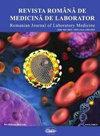CT测量腹部脂肪参数与三种代谢风险生物标志物的关系
IF 0.5
4区 医学
Q4 MEDICINE, RESEARCH & EXPERIMENTAL
引用次数: 0
摘要
摘要导论:心血管疾病是世界范围内发病率和死亡率的主要原因,有必要开发相关标志物来评估心血管风险。在这项研究中,我们研究了腹部脂肪隔区面积(通过基于计算机断层扫描(CT)的平面测量)与实验室验证的心血管风险标志物之间的关系。方法:使用内部和市售软件,对252例(M: F = 1.13)例行腹部CT的患者进行CT扫描,测量脂肪分布。包括的实验室参数是葡萄糖、甘油三酯和甘油三酯葡萄糖指数。结果:女性内脏腹部脂肪(VAF)面积和百分比低于男性,差异有统计学意义(p=0.001, p<0.001)。而腹部总脂肪(TAF)面积在性别间无显著差异。内脏脂肪和甘油三酯水平在女性中呈弱正相关(r=0.447, p=0.002),而在男性中则没有(r=0.229, p=0.09)。葡萄糖水平与CT计算的腹部脂肪参数相关性较弱,女性与TAF相关性最强(r=0.331, p=0.003)。结论:腹部脂肪区室的面积与血液中的代谢参数相关,未来在构建风险评分时可能会考虑对其的评估。在定义明确的临界值和图像分析参数后,每次腹部计算机断层扫描程序的内脏脂肪含量评估可能成为心血管风险评估的替代标记。本文章由计算机程序翻译,如有差异,请以英文原文为准。
On the relationship between CT measured abdominal fat parameters and three metabolic risk biomarkers
Abstract Introduction: Cardiovascular diseases are the leading cause of morbidity and mortality worldwide, and there is a need for the development of adjacent markers to assess cardiovascular risk. In this study, we examined the relationship between the areas of abdominal fat compartments, as measured by computed tomography (CT)-based planar measurements, and laboratory-validated cardiovascular risk markers. Methods: Fat distribution was measured on CT scans in 252 patients (M: F = 1.13) who underwent routine abdominal CT, using in-house and commercially available software. The included laboratory parameters were glucose, triglycerides, and the triglycerideglucose index. Results: The visceral abdominal fat (VAF) area and VAF percentage were lower in females compared to the VAF area and VAF percentage in males, (p=0.001, and p<0.001 respectively). However, the total abdominal fat (TAF) area was not significantly different between genders. Visceral fat and triglyceride levels showed a weakly positive connection for females (r=0.447, p=0.002) but not for males (r=0.229, p=0.09). The glucose levels had a weak correlation with CT calculated abdominal fat parameters, with the strongest statistically significant correlation value being with TAF for females (r=0.331, p=0.003). Conclusions: Areas of abdominal fat compartments correlate with metabolic parameters in the blood, and in the future, their assessment might be considered when constructing risk scores. Visceral fat content assessment for every abdominal computed tomography procedure might become a surrogate marker for cardio-vascular risk estimation after defining clear cut-off values and image analysis parameters.
求助全文
通过发布文献求助,成功后即可免费获取论文全文。
去求助
来源期刊

Revista Romana De Medicina De Laborator
MEDICINE, RESEARCH & EXPERIMENTAL-
CiteScore
0.31
自引率
20.00%
发文量
43
审稿时长
>12 weeks
期刊介绍:
The aim of the journal is to publish new information that would lead to a better understanding of biological mechanisms of production of human diseases, their prevention and diagnosis as early as possible and to monitor therapy and the development of the health of patients
 求助内容:
求助内容: 应助结果提醒方式:
应助结果提醒方式:


